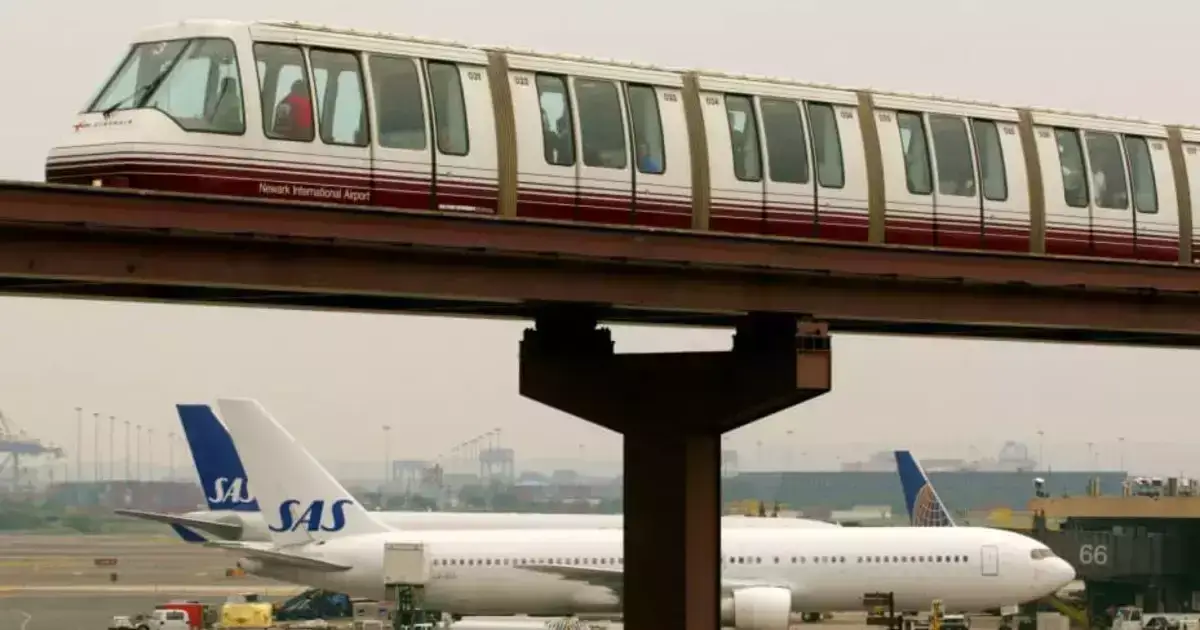Delhi’s Indira Gandhi International Airport is set to introduce a novel means of transportation connecting its terminals.
The renowned Indira Gandhi International Airport in Delhi is about to get a significant upgrade. The authorities are gearing up to introduce an ‘Air Train’ – a mode of rapid transport to seamlessly connect Terminal 1 to Terminal 3. This project, which includes the construction of four stations, is planned over a route of 6 kilometers.
Key Highlights:
- New air train service is on the horizon for the IGI Airport in Delhi.
- The air train will connect Terminal-1 with Terminal-3.
- Delhi International Airport Limited (DIAL) has proposed the air train initiative to the Aviation Ministry.
What’s the Plan? The air train will significantly ease the transit between terminals. Currently, passengers rely on shuttle services to move between terminals, a process that can be time-consuming. With the introduction of the air train, the transfer time will be considerably reduced. This facility is already available at major airports in cities like Chicago, Shanghai, and Frankfurt.
DIAL, after years of planning and consideration, is finally close to realizing this ambitious project. But how will this air train function at Delhi Airport?
Proposal Sent to the Aviation Ministry Delhi International Airport Limited (DIAL) had sent its proposal for an Automated Passenger Mover (APM) to the Civil Aviation Ministry. A reliable source disclosed that the Ministry has already responded to the proposal, and DIAL has been asked to consider the initiative forwarded by the Airports Authority of India.
Stations and Route According to sources, the current plan includes constructing stations at Terminal-1, Aerocity, the Cargo Terminal, and T-3. Despite challenges related to funding for the project, which is estimated to be around 3,400 crores, the funding is expected to be collected through the User Development Fee (UDF). Insights suggest that DIAL studied the 8-kilometer route with 6 stations in Singapore as a reference model and even sought expertise from Singaporean professionals for the same.
Funding Matters The decision regarding the project’s funding lies with the ministry. There are also proposals for two additional stops at Aerocity’s hotel and office, expanding the reach and utility of the train. The potential revenue from these stops could cover up to 2,500 crores of the project’s cost, saving nearly 1,000 crores intended to be covered by the UDF. DIAL is still awaiting a final response from the Ministry on this matter.
Worldwide Trends It’s worth noting that globally, the facility of air trains connecting terminals at major airports is usually free for passengers. However, airports manage their expenses either through landing and parking fees or the User Development Fee (UDF). For instance, Mumbai Airport had a UDF for domestic flights at 20 rupees and international flights at 120 rupees, effective from 2016 to February 2023. This UDF had accumulated a sum of 518 crores, designated for metro connectivity, which was later discontinued.
The introduction of the air train at Delhi Airport not only promises smoother transitions between terminals but also aligns with global standards, ensuring passengers receive world-class amenities and services.
